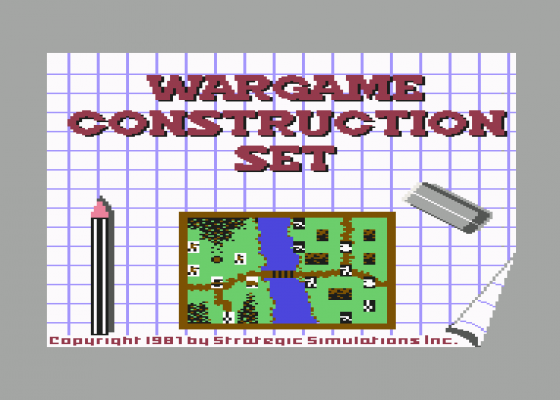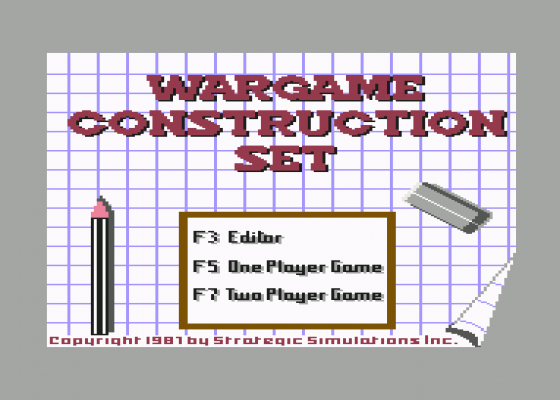
Zzap
 1st September 1988
1st September 1988
Categories: Review: Software
Publisher: Strategic Simulations Inc
Machine: Commodore 64/128
Published in Zzap #41
Wargame Construction Kit
For many years, text adventurers have been able to write their own examples of their favourite game type without resorting to learning machine code. Some would complain that utilities like the classic Quill enabled too many imaginative people to churn out carbon-copy adventures too easily, and halted the development of real programming progress. This may be the case, but I now that I enjoyed playing with my copy of The Quill immensely and inflicted no new adventures on the market; I'm certainly no programmer, and if it hadn't been for The Quill, I would never have written adventures at all.
I suspect that most game design utilities are used in this way, for the private amusement and satisfaction of games players who would otherwise have neither the skill to write their own nor the time to acquire it. And inevitably, these are the limits of The Wargame Construction Set. But at least - at last! - wargamers have a comprehensive utility.
The Wargame Construction Set occupies two sides of a disk, one side given over to a selection of eight tailor-made scenarios. The background to and instructions for each are given briefly in the rulebook, and glancing through these small summaries it's clear to see that the designers have intended to prove that the utility can be used to simulate conflicts in many different genres.
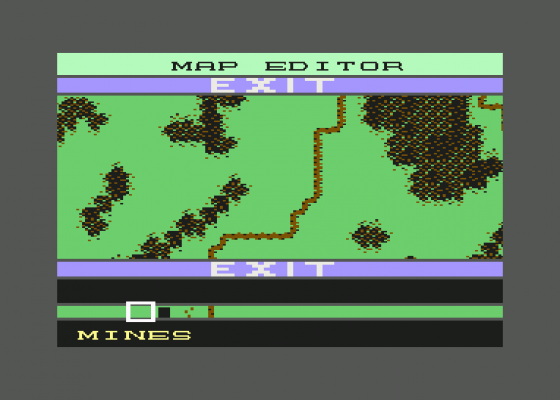
In addition to the inevitable WWII battles, there are two science fiction scenarios, and episode from WWIII and the American Civil War, and the siege of a castle in the 12th century. The on-screen appearance of all the games is very similar, but this is a generous selection, and proves that the same basic terrain shapes and unit types can be juggled around to stimulate the imagination of the amateur designer. The true wargaming addict will want to play these samples through before going onto the serious business of design, and it's worth getting to grips with a few of them to gain a good knowledge of the way the game works. Because when you come to construct your own masterpiece, it will be the same game.
The major limitation of the WCS is the rigid, unalterable turn structure. You have a choice between a one and two player game, but no chance to decide how many and what kind of phases there will be in a turn.
A nine-phase turn has already been decided by the designers of the utility, and the function of each phase is described in detail. It's a standard and straightforward sequence, quickly familiar to anyone with wargaming experience; observation, friendly fire, friendly movement and so on. A victory phase at the end of each turn assigns points to the player for enemy units eliminated and victory squares occupies.
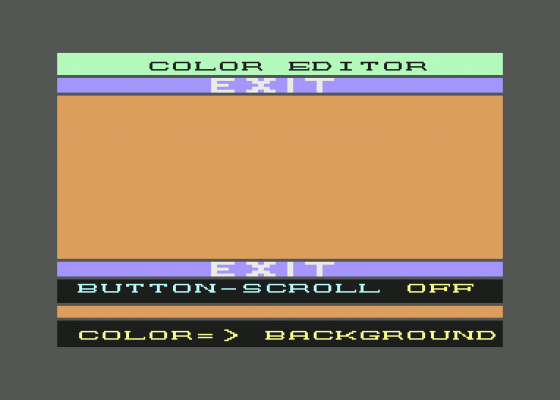
What the editor allows you to determine is everything else about the content of the game; the number and type of units involved their statistics, their value, their deployment on the map and the shape and structure of the map itself.
The Editor is driven by a simple menu, and to give a fair idea of the capabilities of the utility I'll describe the options briefly and in turn. Disk access enables the player to load and save scenario, either from the sample disk or from his own. It's not possible to create scenarios which will run independently of the editor, so the WCS clearly imposes its own restrictions, unlike The Quill, the market is not going to be overrun with cloned nine-phase turn wargames, and this is undoubtedly a good thing.
The 'draw map' routine is undoubtedly the first thing that buyers will want to play with. You're presented with a blank screen to be filled with a landscape constructed from a visual menu displayed below. The types of terrain available are already defined by the program, and their graphic form pre-set; as with the units, there is no facility to draw your own. The selection offered is fairly comprehensive, and terrain like woods, roads and rivers have several different shapes so that you can assemble twisting paths, streams, lakes and forests. If you choose to make your map on a smaller scale - to simulate the siege of a building for instance - there is a facility to build a structure from blocks that represent whole buildings on a larger scale. Each terrain icons fills one 'square' on the map, so you can easily plan out your map beforehand on squared paper.
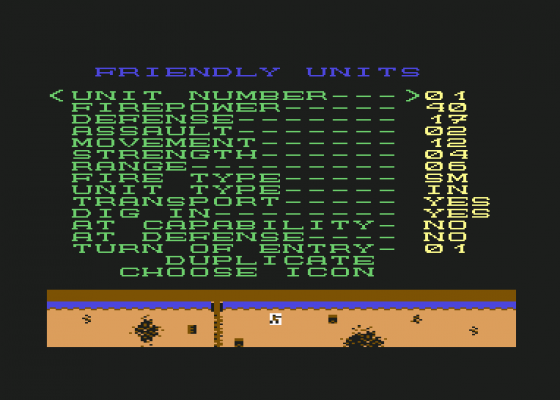
Drawing the map on-screen is a simple, joystick-operated process; with a flashing cursor you select an icon then deposit it with another cursor at the appropriate position. Mistakes can be erased with a 'blank' icon.
The consequences of this simple system is that all of the maps you can produce look very sameish, and none of them look very impressive. But the purpose of this utility is not to produce an attractive, commercially viable game. The actual structure of the landscape for use in a wargame can be varied infinitely, as long as you're prepared to accept that trees, water, hills and so on always produce the effects prescribed by the program. They have a standard 'cover' value, for instance, and movement cost.
One change that the designer can make to the graphics is the colour of all types of terrain. So you can, with some imagination, produce a pseudo-Martian landscape with a brilliant red background, yellow trees and green water. This may be some consolation for the frustrated artist.

The most important part of the editor routine is the definition of the units that will be available in the game. There are a total of 31 friendly units available - though, of course, you can choose to employ less than that. The type of statistics attached to the units has already been decided, and the designer merely has to fill in the values for the army that he wants to create. For example, 'firepower' can be set between 1 and 99 and affects the degree of damage that a unit can do to another in combat. Strength ranges from 1 to 7 and represents the amount of damage the unit can take before expiring.
The complete list of parameters is as follows: firepower, defence, assault, movement, strength and range. You can also choose the type of fire (very much oriented to modern mechanised warfare - there are machine guns and mortars, but no twanging crossbow bolts or flying spears) and the basic nature of the unit. The rigidity of the system interferes with the flexibility of the setting here; you have no choice but to select a unit type from a list that assumes a modern scenario. If you want to create cavalry or perhaps fantasy creatures, you have to apply a liberal quantity of imagination.
Setting up the unit parameters is very straightforward, and there is a handy function to duplicate any quantity of a particular type.
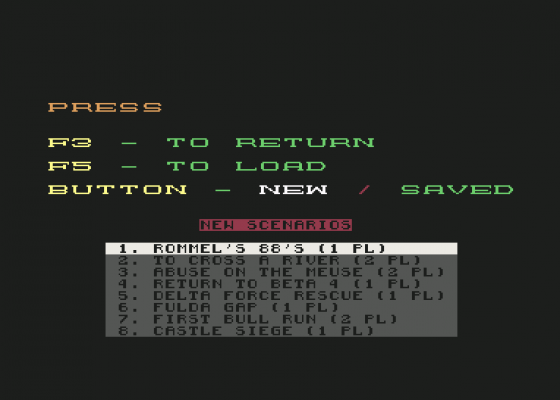
Enemy units are constructed in the same way, with the addition of an elementary artificial intelligence factor. 'Aggression', ranging from 0 to 7, defines how determined the unit will be when under attack. At a low level, it will retreat if threatened. At level 6, it attacks anything in sight. At level 7, it becomes a 'counter attacker' and once attacked will follow friendly units relentlessly and fight to the death. Units are deployed easily, by means of the cursor.
The operation of the editor is simplicity in itself, and most of the data input is visual and self-explanatory. There's no need to learn command structures or similar tricks. Anyone moderately familiar with wargaming could pick up a joystick and draw a simple game straight onto the screen in about half an hour.
To get full use out of this utility, you will have to put in a lot more imagination and effort than that.
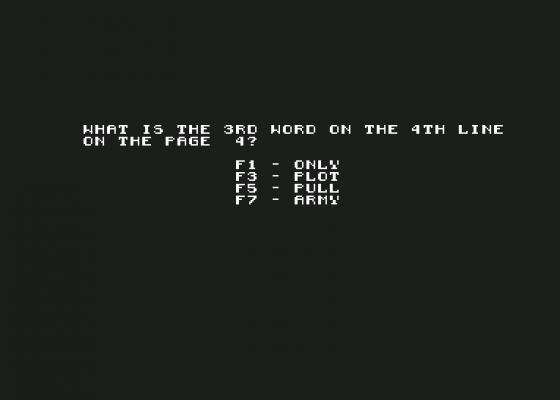
The rulebook takes the aspirant designer through a tutorial, which, pleasingly enough, constructs a small fantasy war scenario and demonstrates that it's possible to designate units as individual characters as well as groups of skeletons, zombies and archers. They still look rather like WWII infantry on screen, but the idea is there.
This is not a utility which is going to allow anyone to produce a commercially viable wargaming product, but then it is clearly not intended to be. It does provide a framework for wargamers to construct their own scenarios, and the framework is, if rigid, fairly broad; the fact may remain that you're always going to be playing the same game with different numbers and a different map, but the game itself is sophisticated enough not to try the patience. My major objection is that due to an inattention to cosmetic details the games are inevitably unatmospheric.
There is no way to name units on-screen, for instance; they may be German Panzers or Zombie Legions of the Shadowlord in your scenario notes, but as far as the computer is concerned they're Units 1 or 2. An option to design your own unit graphics would enhance the utility, and surely wouldn't have posed insurmountable difficulties.
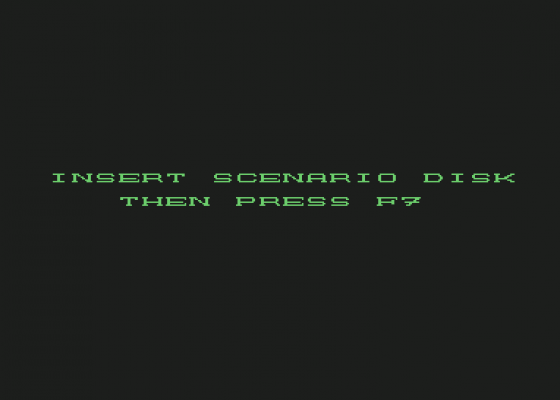
Anyone buying the Wargame Construction Set must be prepared to work within the limitations I've outlined. Accepting that, it's easy to use, efficient, extremely well documented and can't fail to provide the enthusiastic designer with hours of entertainment. And you get eight free games thrown in!
Verdict
Presentation 89%
The editor is very easy to use - this is that rare creature, a self-explanatory utility.
Graphics 55%
Small and uninspiring, and you're stuck with them!
Rules 90%
Exhaustive documentation, with a tutorial included.
Overall 79%
Performs its function well, and is worth getting if you want to try out your own wargame designs within a traditional framework.
Other Reviews Of Wargame Construction Set For The Commodore 64/128
Wargame Construction Set (SSI/US Gold)
A review by Tony Hetherington (Commodore User)


